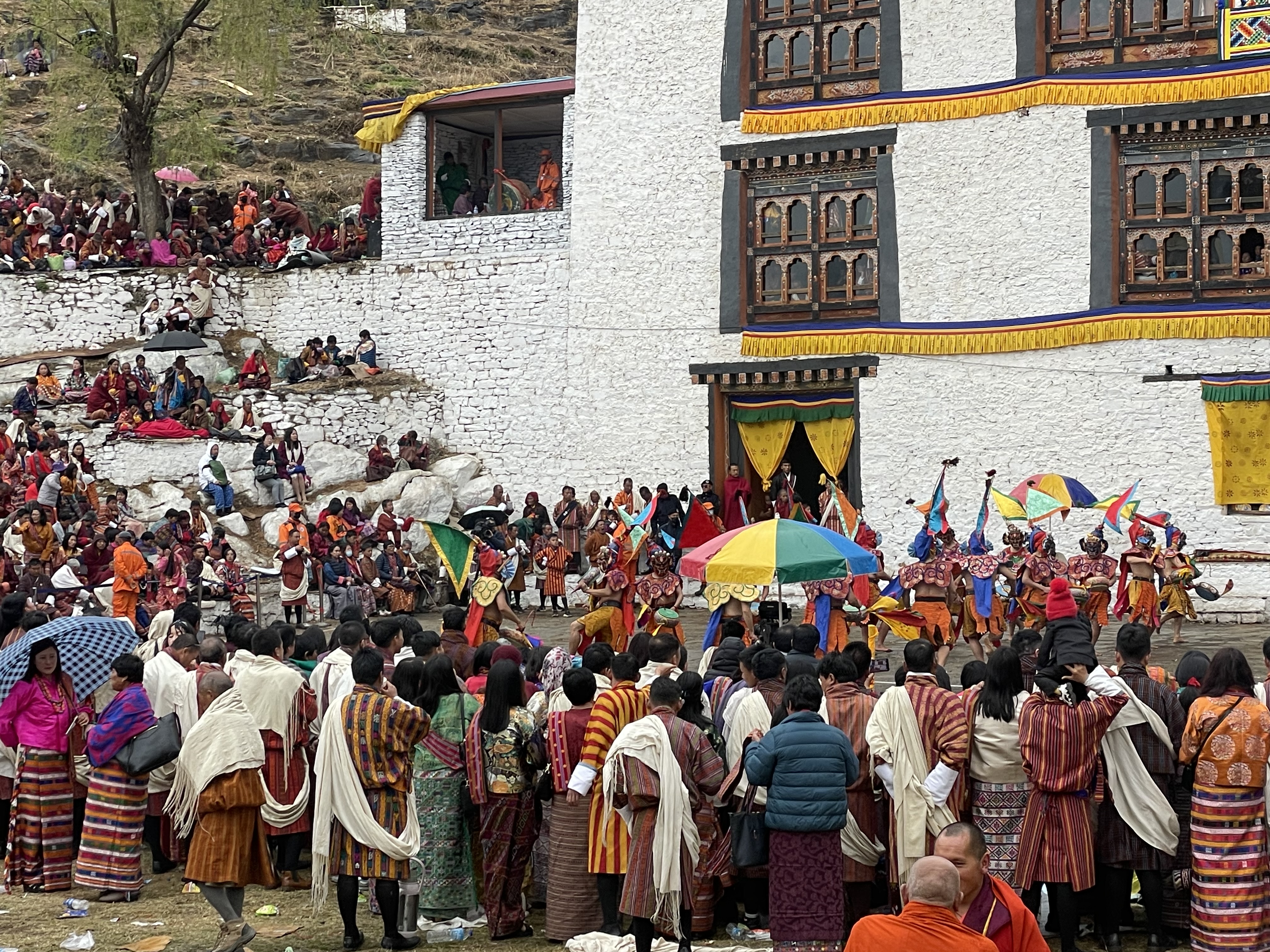25th March, 2024 marked the culmination of five days of annual festival in Paro. Thousands of people from Paro and nearby districts attended the festival to witness the religious mask dances as a form of blessings. During the mask dances, it is believed that the deities of tantric teaching are invoked and through their power and blessings, misfortunes are removed. Each mask dance is preceded by explanation about the mask dance and its significance.
In 2018, UNFPA collaborated with the Central Monastic Body and the Royal Academy of Performing Arts (RAPA), to integrate social messages on prevention of gender-based violence and harmful practices related to sexual and reproductive health, into the relevant mask dance narration. Since then, many of the districts have been delivering the social messages through the mask dance narratives.
“Pa cham, performed by males and Rigma Chudu performed by females, both pay homage to Guru Rinpoche, signifying that both genders have an equally important roles in worship since the time of Guru Rinpoche, therefore gender equality and women’s participation is very important. Women and girls should step forward and seize every opportunity” explained Mr. Chencho, commentator of Paro Tsechu.
Similarly, the popular Pho Lay and Mo Lay cham, which is performed in most of the annual festivals across the country, based on folk tale of king Norzang, portrays a conflict between husband and wife that leads to loosing of her nose. It conveys lesson on how to lead a harmonious life with unwavering love and faith and at the same time social message is reinforced on the importance of challenging harmful social and gender norms that justifies hitting wife and accepting violence.



